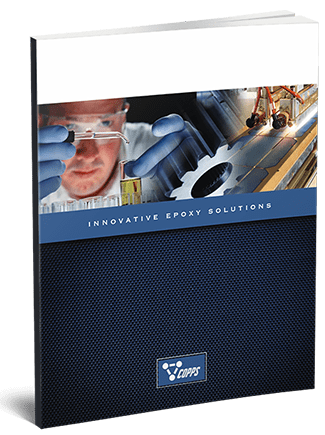Epoxy is a highly versatile material used across countless industries, ranging from electronics and construction to artistry and more. If you have ever used epoxy, you may have wondered how it works on the chemical level and what factors affect curing. Here, we’ll dive into the specifics of epoxy, breaking down its chemical makeup, cure stages, and elements that contribute to the curing process.
The Chemical Functioning of Epoxy
Epoxy resin is composed of two primary components: curing agents and epoxy resin. The epoxy resin contains epoxide groups (A), and the curing agents, or hardeners, contain amines (B) that cause a chemical reaction when they come together. During this chemical reaction, the resin’s epoxide groups cross-link with the curing agent to form a polymer network. The reaction forms strong covalent bonds to transform the liquid mixture into a durable, solid material.
The Cure Stages of Epoxy
The epoxy curing process takes place during the following four stages:
- Induction Period. The induction period refers to the initial delay before the curing reaction starts. This period can vary in duration, depending on the specific epoxy formulation, humidity, and temperature.
- Gelation. After the induction period, the epoxy begins transitioning from a liquid state to a gel-like state. Gelation is critical to making the epoxy moldable and workable.
- Exothermic Cure. The curing process generates heat, causing the epoxy to be exothermic. Temperature control during this stage is crucial in ensuring the epoxy does not overheat, which could compromise the properties of the finished product.
- Post-Cure and Full-Cure. Once the exothermic phase has ended, the epoxy will continue to gradually cure. Post-curing involves subjecting the epoxy to specific time and temperature conditions. This step is critical for achieving maximum durability and strength.
Factors that Affect the Epoxy Curing Process
Several factors can influence the curing process, including:
- Temperature and humidity. Extreme environmental conditions can slow or speed up curing, as well as affect the quality of the end result. For example, higher temperatures often result in faster curing times, whereas colder temperatures may slow the process down. Adequately controlling temperature and humidity is essential in ensuring consistent results. If high temperatures are a concern, you can always opt for slow curing epoxies, which are specifically formulated to be applied in those types of environments.
- Curing agent and resin selection. Understanding the properties of different epoxy resins and curing agents is key in determining the proper combination for your needs. The exact combination you choose can significantly impact the curing rate, so it’s important to select the formulation based on your unique epoxy application.
- Thickness or mass of the epoxy layer. Due to differences in heat dissipation, thicker layers of epoxy take less time to cure than thinner layers.
- Mixing ratio and mixing process. To ensure complete and uniform curing, it’s critical to precisely measure and thoroughly mix the different curing agents and epoxy resins.
- Substrate preparation. The preparation and cleanliness of the surface on which the epoxy is applied play a key role in the overall curing process. Dirty surfaces can introduce contaminants to the epoxy, resulting in poor adhesion and curing.
Epoxy Products From Copps Industries
Understanding epoxy’s chemical makeup and the factors that influence the curing process is important in ensuring a successful epoxy project. At Copps Industries, we’re a leading supplier of USA-made epoxy resins, offering superior industrial epoxy products that deliver consistent results. With over four decades of experience, we can formulate custom epoxy resin solutions that meet your unique application requirements.
For help determining the right epoxy product for your needs, or to learn more about our custom capabilities, contact us or request a quote today.





